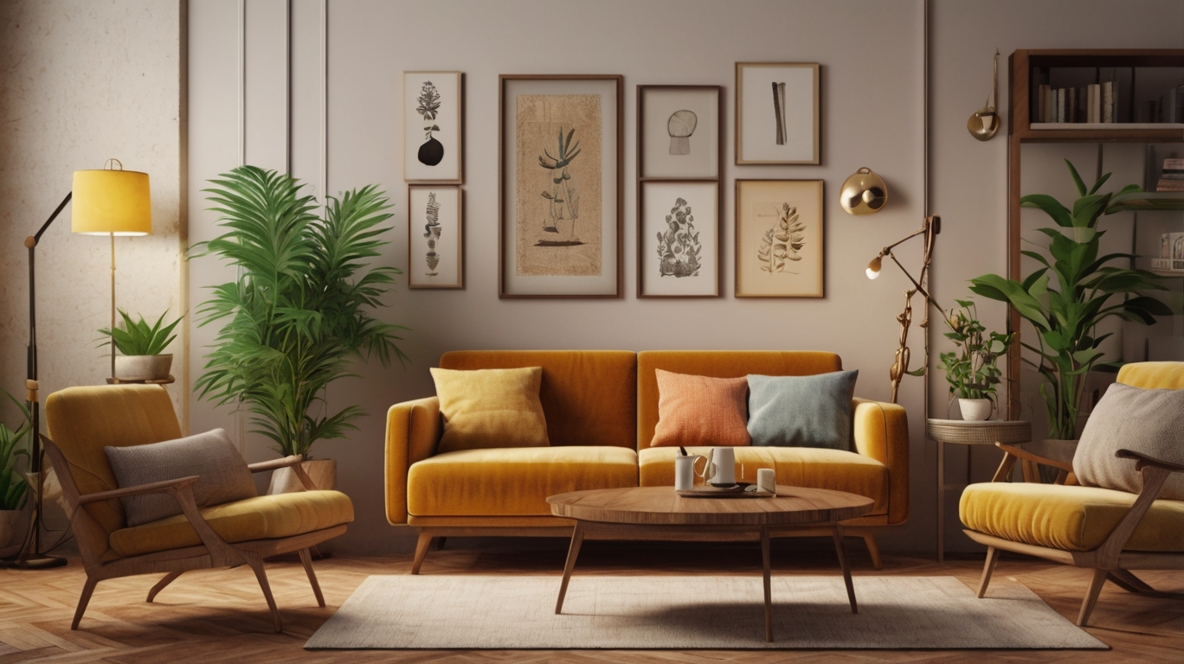There’s something deeply comforting about a vintage living room. It’s like stepping into your grandmother’s house on a Sunday afternoon, when time felt slower and the radio hummed softly in the corner. Retro interiors have this magical way of making spaces feel both warm and mischievously stylish. But in 2025, “vintage” isn’t just about dusty floral couches and squeaky rocking chairs anymore. It’s about remixing eras, stealing little tricks from the past, and weaving them into spaces that feel fresh and alive today.
Below, you’ll find twenty unique, slightly offbeat, and incredibly doable hacks to turn your living room into a retro-inspired sanctuary. These aren’t the same “paint your walls olive green” tips you’ve read a hundred times. These ideas come with a little twist, a little soul, and a sprinkle of imperfection that makes vintage design so lovable.
1. Layer Old Wallpaper With New Paint-Like A Secret Whisper
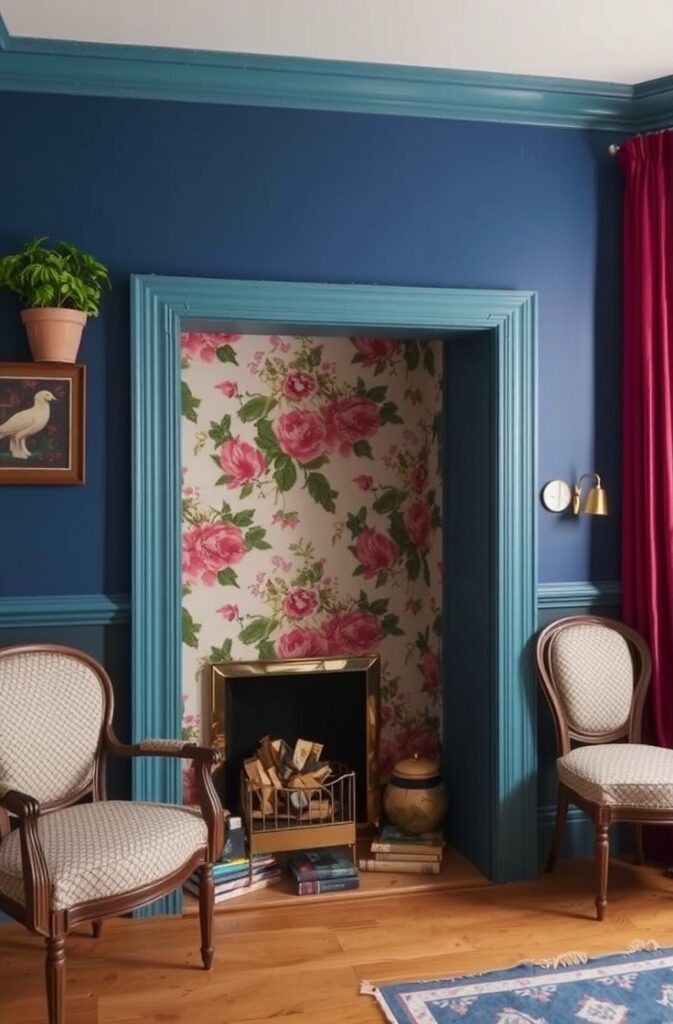
One of the most overlooked vintage hacks involves your walls. Forget the predictable retro wallpaper that covers every inch. Instead, try layering. Put up a section of vintage wallpaper just one wall or even half and then paint around it with a bold, modern hue.
The trick here is contrast. A faded floral wallpaper from the 60’s against a sharp midnight blue paint suddenly looks like an art installation rather than a tired pattern. If you slightly tear the wallpaper edges before painting, it creates this uncanny “found-in-an-old-cinema” effect. People will lean in, squint, and whisper, “Was this always here?” That’s exactly what you want.
You can even use leftover scraps of vintage wallpaper to frame a fireplace or doorway. A tiny bit goes a long way. It’s like leaving little breadcrumbs of nostalgia through your room.
2. Hunt Down Odd Retro Lighting – Don’t Match Anything
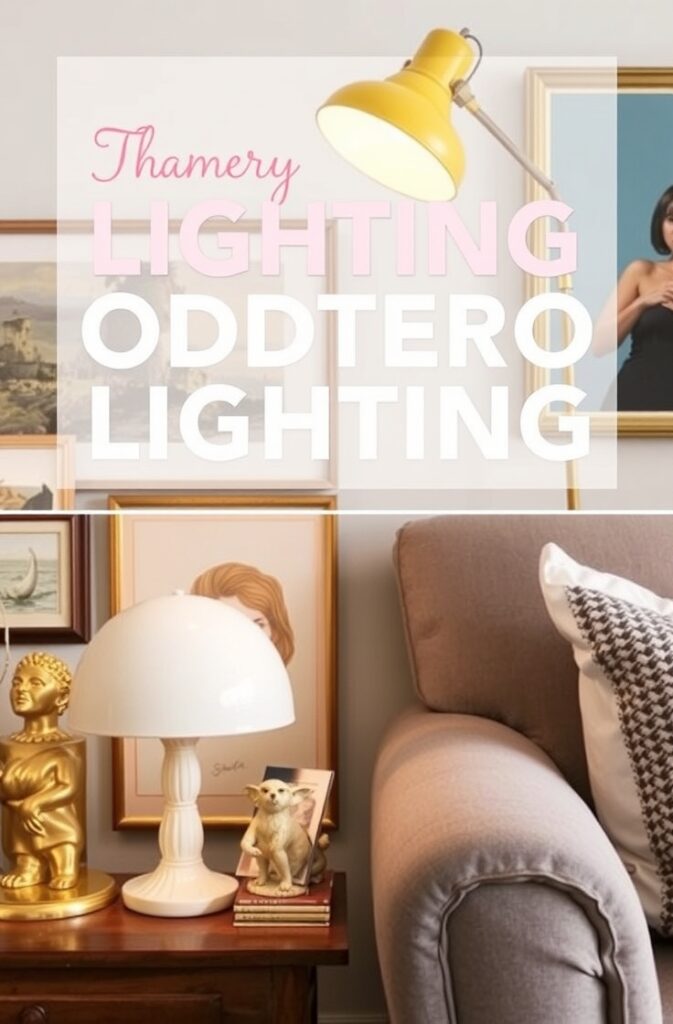
Lighting in vintage spaces should feel like it was collected over time, not bought from the same store on the same afternoon. So ditch the matching set of lamps. Instead, hunt for weirdly beautiful retro lights maybe a 70s mushroom lamp on one side table and a brass swing arm lamp from the 50s on the other.
A slightly scratched ceramic lamp base with a velvet shade? Perfect. A dusty yellow floor lamp with a tilted head? Even better. These odd pieces bring character, and when they’re turned on together, their warm light feels like a memory you didn’t know you had.
The best part? They don’t need to “go together.” In fact, the less coordinated, the more authentic. Vintage rooms always had that “collected over decades” vibe. You can’t fake it with a three-piece lighting set from a catalog.
3. Bring Back Statement Sofas With Modern Fabrics
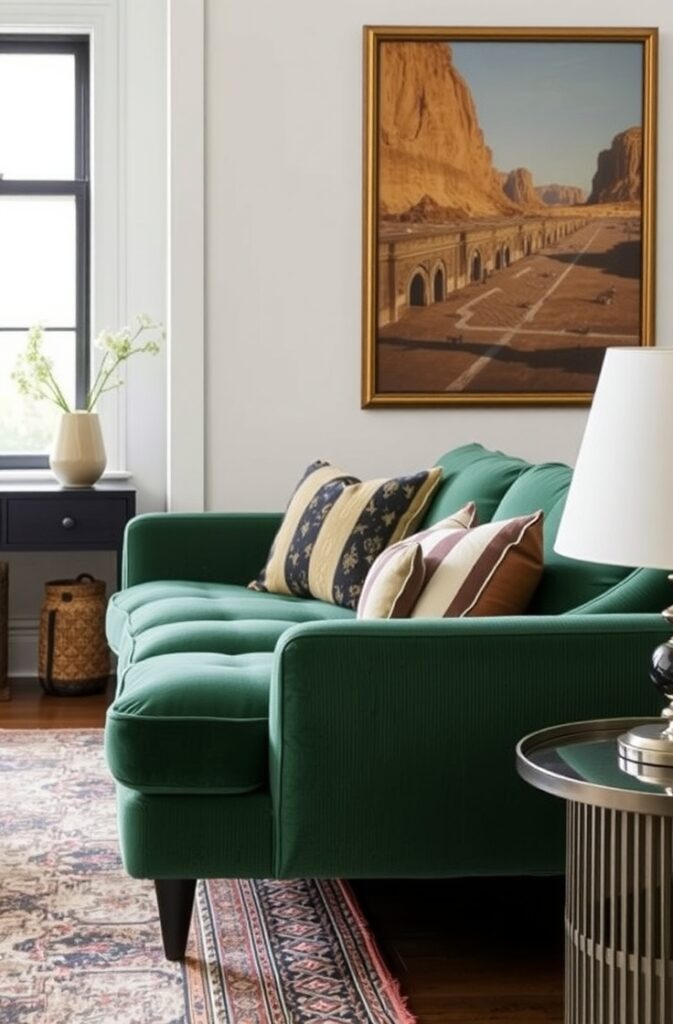
There’s always that one sofa in a vintage living room. Maybe it’s emerald velvet. Maybe it’s a low, tufted piece that looks like it came from a glamorous hotel lobby in 1962. Modern spaces often play it too safe with beige sectionals. Boring.
Instead, find a vintage sofa with a strong silhouette—curved arms, deep seats, unusual legs. Don’t panic if the fabric looks like a wet carpet. Get it reupholstered in a fabric that screams “now,” like boucle, bold stripes, or even corduroy.
That mix between old shape and new texture feels wickedly stylish. People won’t be able to tell if you dug it out of a theater basement or bought it from a high-end boutique. That’s the sweet spot.
And here’s a cheeky trick: throw one dramatically oversized cushion on it. Just one. It makes the whole thing look deliberate and slightly rebellious.
4. Use Retro Rugs as Wall Art
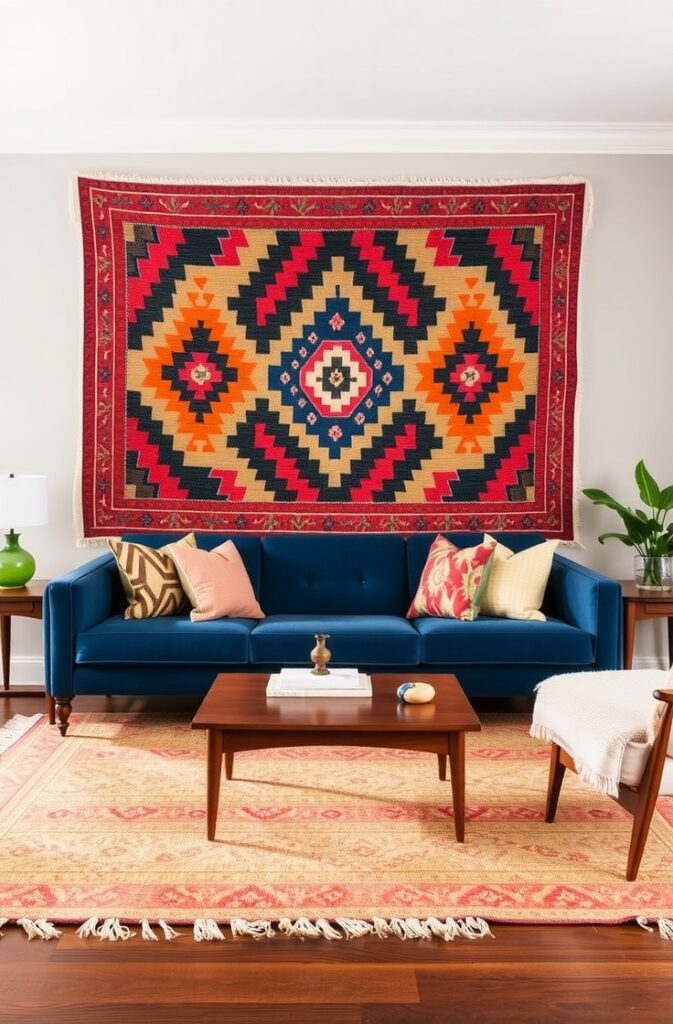
Floors aren’t the only place for rugs. In fact, hanging vintage rugs on walls has exploded in 2025 design circles, but not in the way your great-uncle did with his Persian tapestry.
Pick a bold geometric mid-century rug or a worn kilim with faded oranges and reds. Hang it like a piece of art behind your sofa or above a sideboard. It instantly brings warmth and texture, and it absorbs sound in the most satisfying way.
If the rug is slightly imperfect frayed edges, weird pattern misalignments don’t “fix” it. Those quirks are what make it look authentic. Modern art can feel cold; vintage rugs on walls feel like stories stitched in wool.
5. Reclaim Retro Audio – Turn Your Tech Into Decor
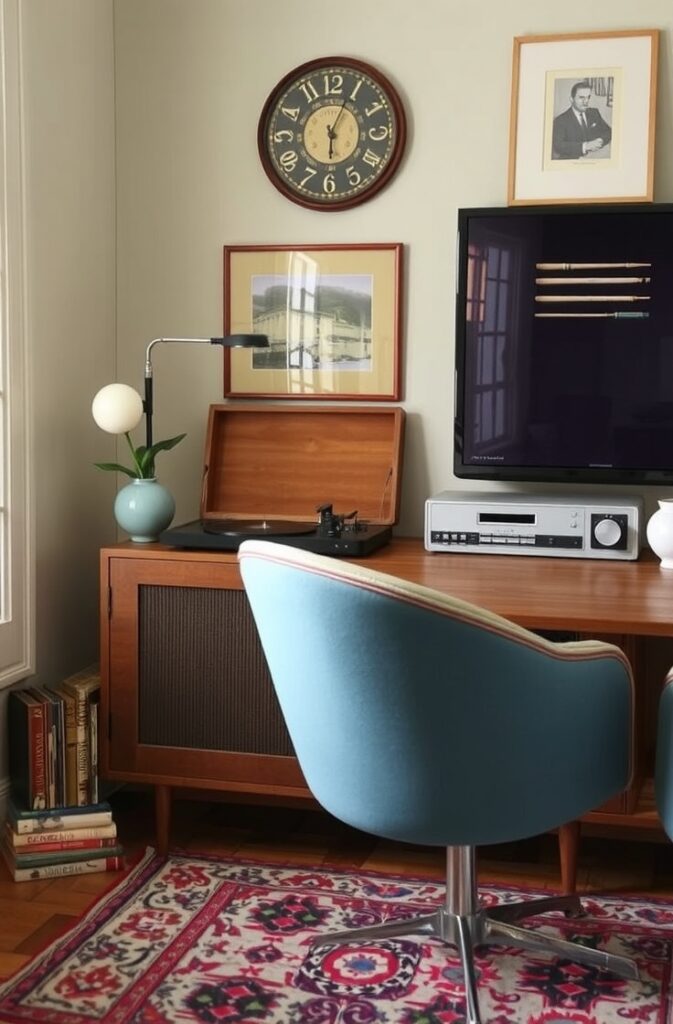
You know what most people do wrong with vintage styling? They leave giant black speakers in the corner like sad, forgotten robots. Vintage interiors celebrated audio equipment as furniture.
If you can find an old wooden console record player even one that doesn’t work it can be repurposed as a media cabinet. Slide your modern speaker inside, keep your Bluetooth hidden, and let the shell do the aesthetic heavy lifting.
Even better, collect vinyls, reel-to-reel tapes, or old radios and stack them like decor. It doesn’t matter if they function. In vintage spaces, the presence of these objects matters more than their utility. A turntable spinning a slow jazz record in the background? That’s ambiance you simply can’t fake with Spotify playlists.
6. Mix Retro Wood Tones Like You Don’t Care
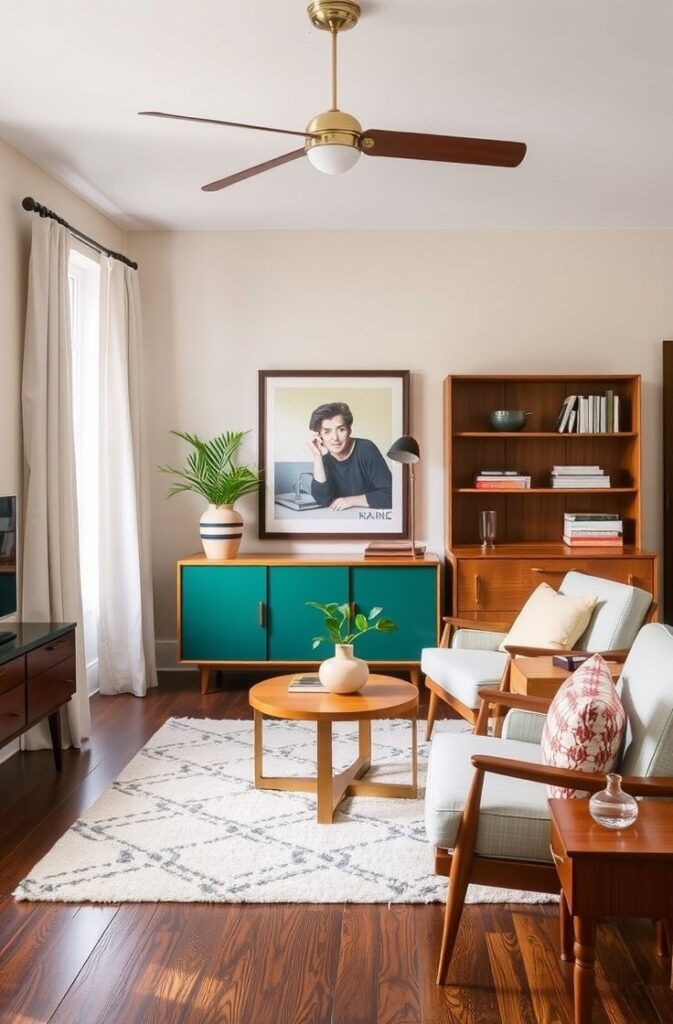
People often think all wood must match. Nope. Not in vintage rooms. A 1960s teak credenza can live happily next to a dark mahogany armchair and a blond oak coffee table.
The trick is to balance the tones with textiles. A thick cream rug, linen curtains, or a chunky throw can act like neutral glue that keeps everything from clashing. In fact, the more varied the woods, the more authentic the space feels.
Back then, furniture wasn’t purchased all at once. It was inherited, found, traded. So don’t panic if your walnut sideboard looks “too red” next to your pine shelf. Just give them a shared moment like a vase or art piece that visually ties them together. It’s gloriously unbothered.
7. Go Big on Curtains – Heavy, Dramatic, Retro
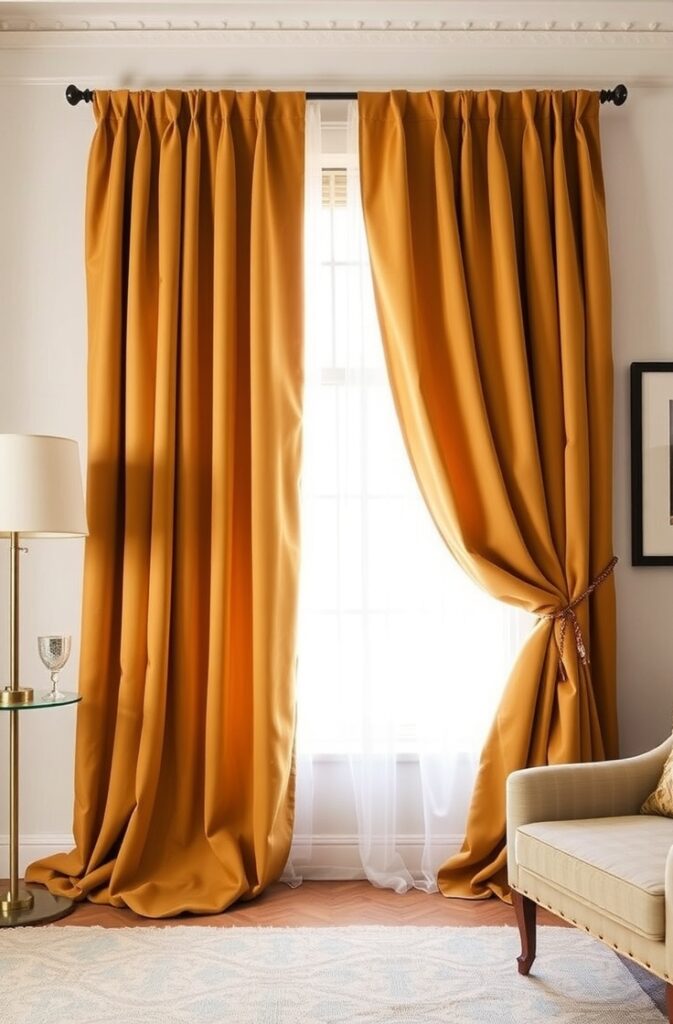
Modern minimalism killed curtains. Everything became sheer, white, and boring. But vintage spaces? They dressed their windows like royalty.
Choose curtains that pool dramatically on the floor. Think mustard velvets, dusty pink satins, or wild geometric prints from the 70s. Layer them with sheer inner curtains if you want the light to filter through softly during the day.
Heavy curtains add instant drama, insulate better, and make your walls look taller. Plus, there’s something deliciously theatrical about closing them at night and feeling like you’re in a mid-century cinema room.
8. Play With Unusual Color Combos – Make People Pause
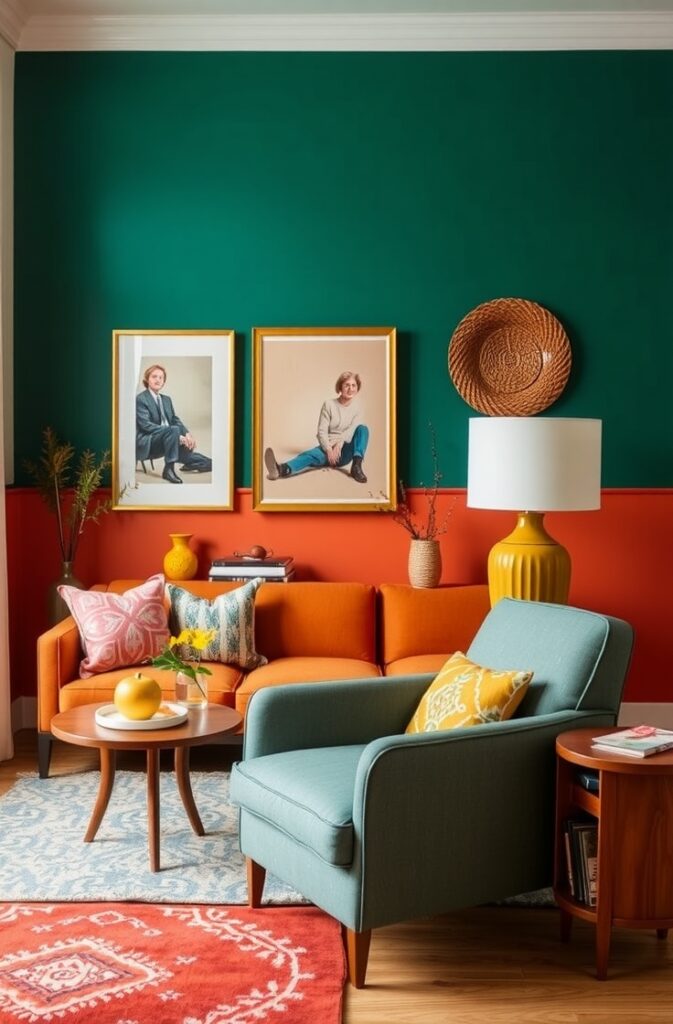
Forget safe palettes. Vintage rooms weren’t afraid to throw odd color combinations together deep forest green with burnt orange, teal and mustard, blush and walnut. In 2025, this kind of confident color mixing feels refreshing and rebellious.
Start small. Paint a single accent wall in a rich, nostalgic shade, then layer in contrasting cushions, vases, or lamps. Vintage spaces rarely relied on a single “theme” color. Instead, they let colors collide and somehow work.
If a guest walks in and hesitates for a second, squints, and then says, “Huh… actually, that’s nice,” you’ve nailed it. That’s the vintage sweet spot. It shouldn’t be perfect. It should feel a bit like an unexpected song lyric that sticks in your head.
9. Create Little Nostalgic Corners – Like Time Pockets
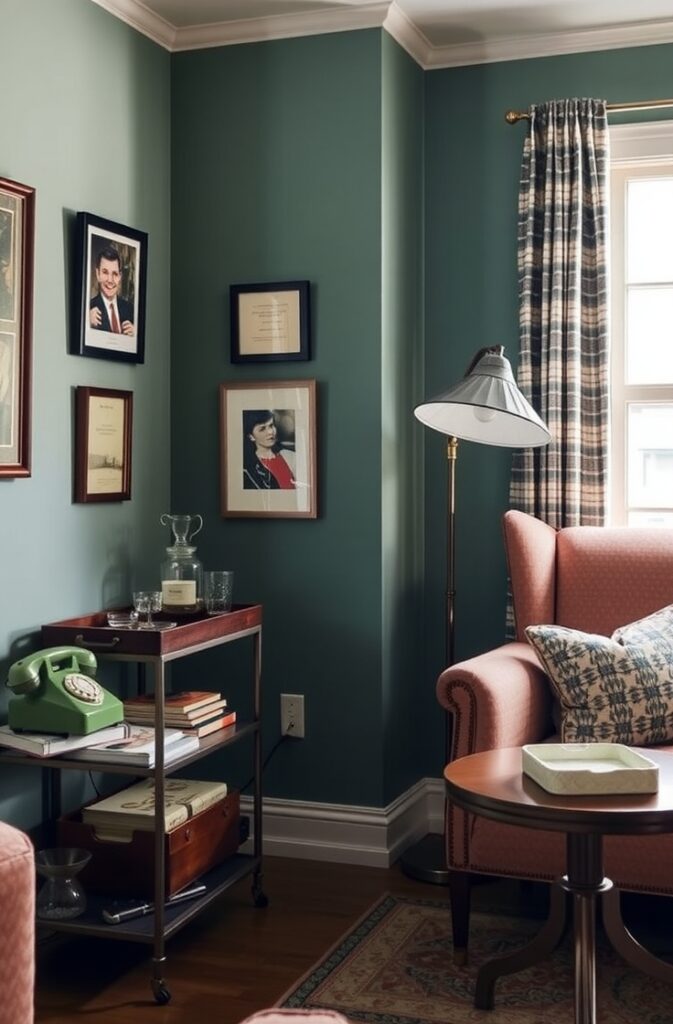
A retro living room isn’t only about the main layout. It’s about pockets of nostalgia. Maybe a small bar cart tucked beside a window, filled with old whiskey decanters and mismatched glassware. Or a reading nook with a vintage armchair and a leaning floor lamp that looks like it’s seen some stories.
These corners don’t need to be big. Even a small side table with a rotary phone, an old magazine rack, and a ceramic ashtray (used as decor, obviously) can teleport the vibe.
Think of these corners like time portals. They don’t shout. They whisper. Guests will wander toward them instinctively, like moths to the past.
10. Embrace Imperfection – The Real Retro Hack
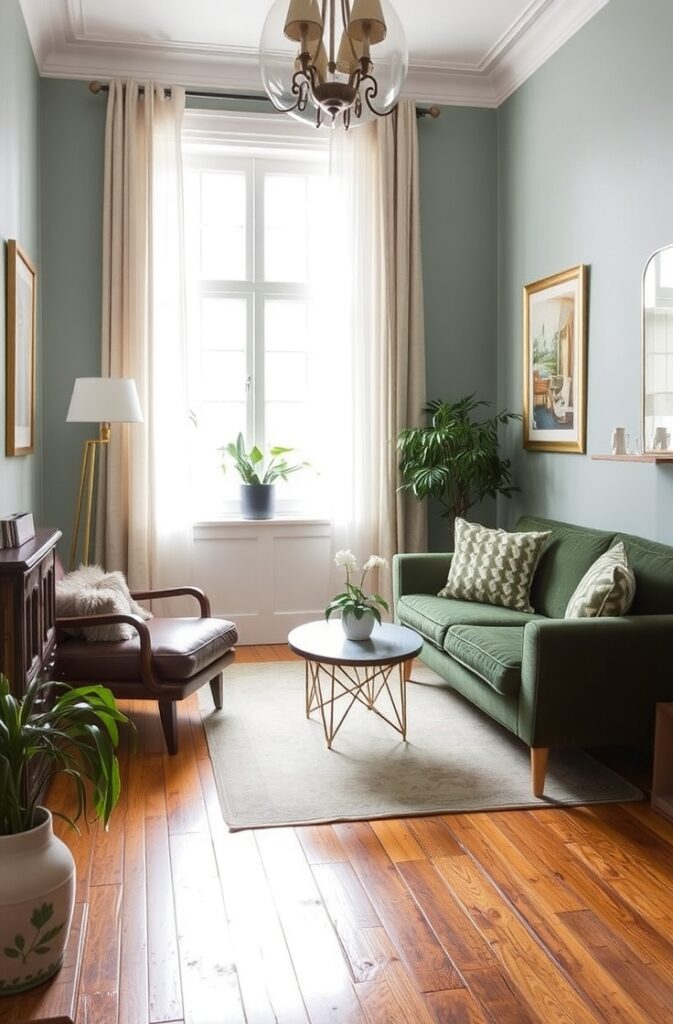
The biggest difference between modern interiors and vintage-inspired ones is perfection. Modern spaces try too hard to be flawless. Vintage spaces… they breathe. They allow scratches, uneven paint, slightly crooked frames.
Leave a scuffed floorboard exposed. Don’t repaint that chipped side table just yet. Let the lived-in texture speak. Add a slightly offbeat framed artwork that doesn’t “fit” the wall.
Vintage interiors are about storytelling, not showrooming. The real hack in 2025 is to let your living room feel like it has a past even if you only started decorating last weekend.
11. Swap Art Frames With Vintage Mirrors
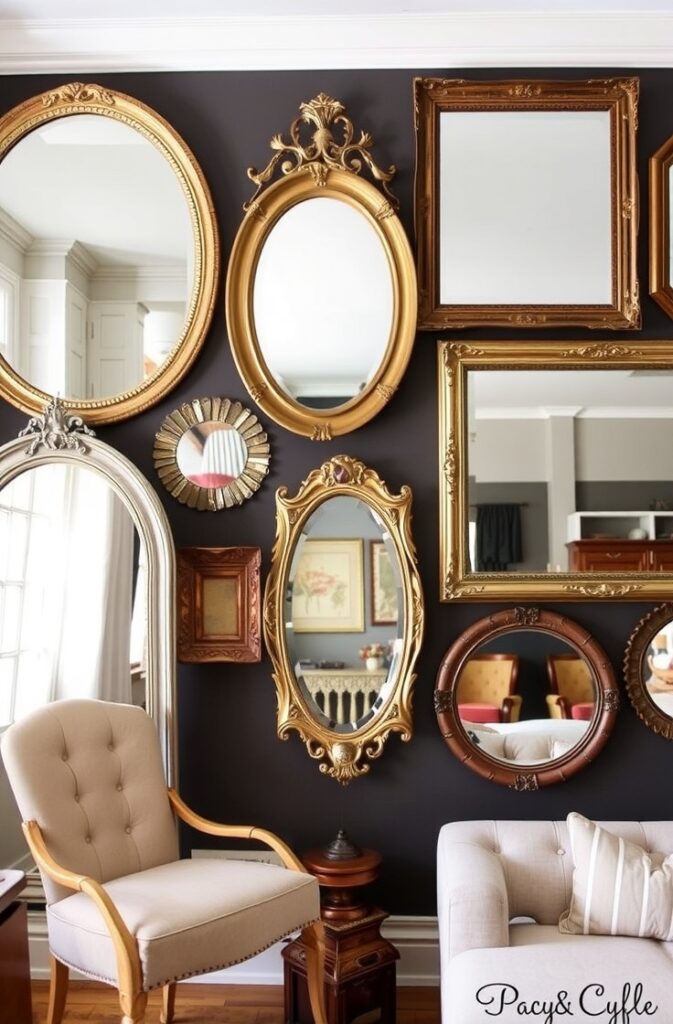
Here’s a strange little trick: instead of hanging art everywhere, hang vintage mirrors in mismatched shapes. Think oval mirrors with peeling gilt, a square one with foxed glass, maybe a baroque frame that’s slightly cracked but still charming.
Mirrors from the 40s to 70s often had these quirky bevels and etched edges that modern mirrors can’t copy. Hang them together like a gallery wall but don’t align them perfectly. Slightly uneven placement gives it that “grandma hung these over 30 years” vibe.
Bonus: they bounce light around and make small living rooms feel mysteriously larger like the room’s hiding extra corners.
12. Use Vintage Trunks as Coffee Tables
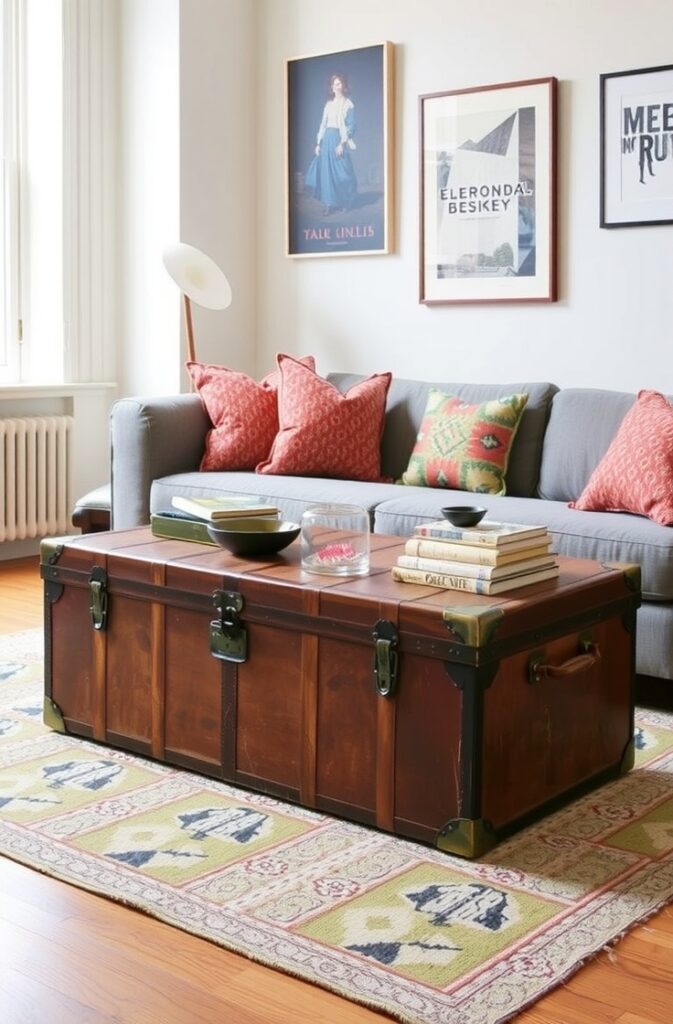
Forget sleek marble slabs. In a retro space, a big old trunk can make a surprisingly stylish coffee table. Preferably one that’s scuffed, a bit dented, and smells faintly like old books.
Trunks have this dual power they act as both storage and conversation starters. Throw a faded kilim runner or a lace doily over the top if you want to soften the look. Stack a few design books, maybe an ashtray with matchsticks, and suddenly it looks like a scene from a 1971 Paris apartment.
And here’s the thing: modern tables are too polite. Vintage trunks have attitude.
13. Bring in Retro Plants – But Display Them Weirdly
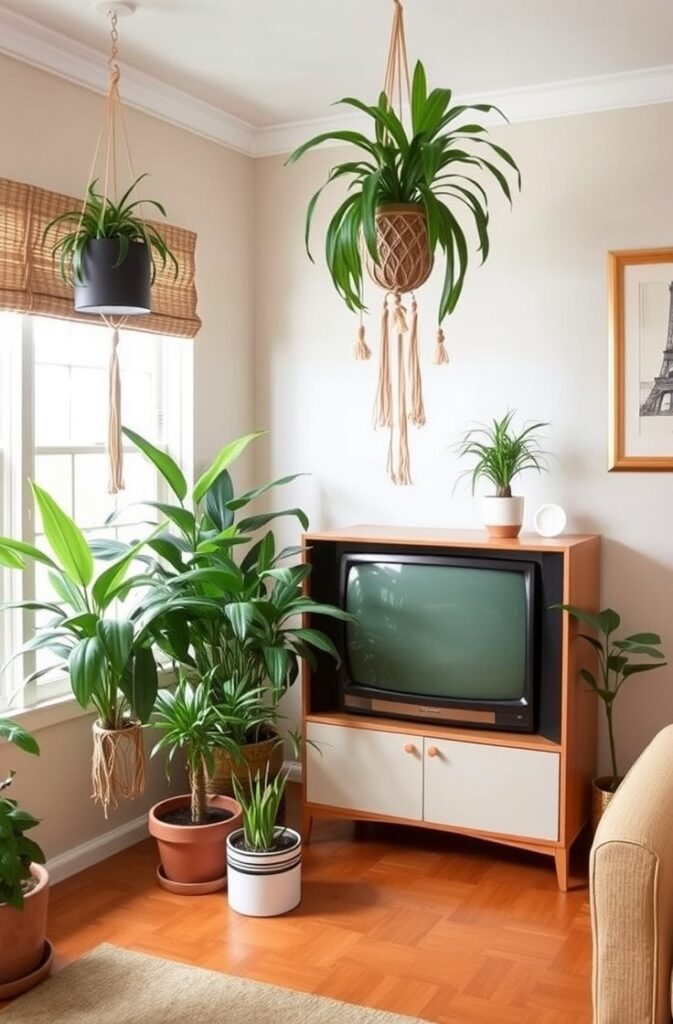
Houseplants have gone hyper-modern lately. But the way plants were displayed in vintage interiors had so much personality. Think macramé hanging planters from the ceiling, plant stands shaped like atomic sculptures, or tall floor ferns placed beside televisions.
Spider plants, rubber trees, and Boston ferns are classics. But don’t just line them up on windowsills like a dentist’s office. Hang one low over a side table. Place another in a giant ceramic pot that looks like it’s from your aunt’s garage.
Plants back then weren’t accessories they were characters in the room.
14. Use Bookshelves as Room Dividers Like the 60s
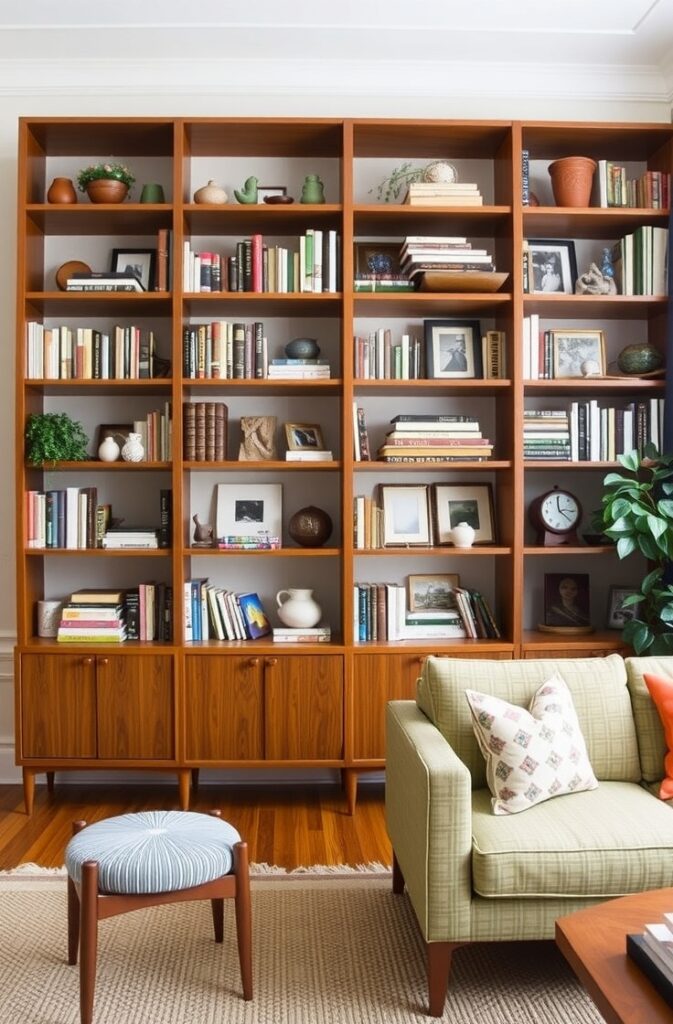
In the mid-century era, open bookshelves were often used as dividers, not just storage. You can copy this trick even in a modern apartment. Get a low vintage shelf, preferably teak or walnut, and position it halfway into the room.
Load it with old books, ceramic knickknacks, small framed photos, and maybe a quirky clock. The open design keeps the space airy while creating zones like a lounge side and a reading side.
It’s sneaky space planning without building a wall. And it makes your living room feel layered, almost like stepping through different eras in one glance.
15. Frame Vintage Fabric or Scarves as Art
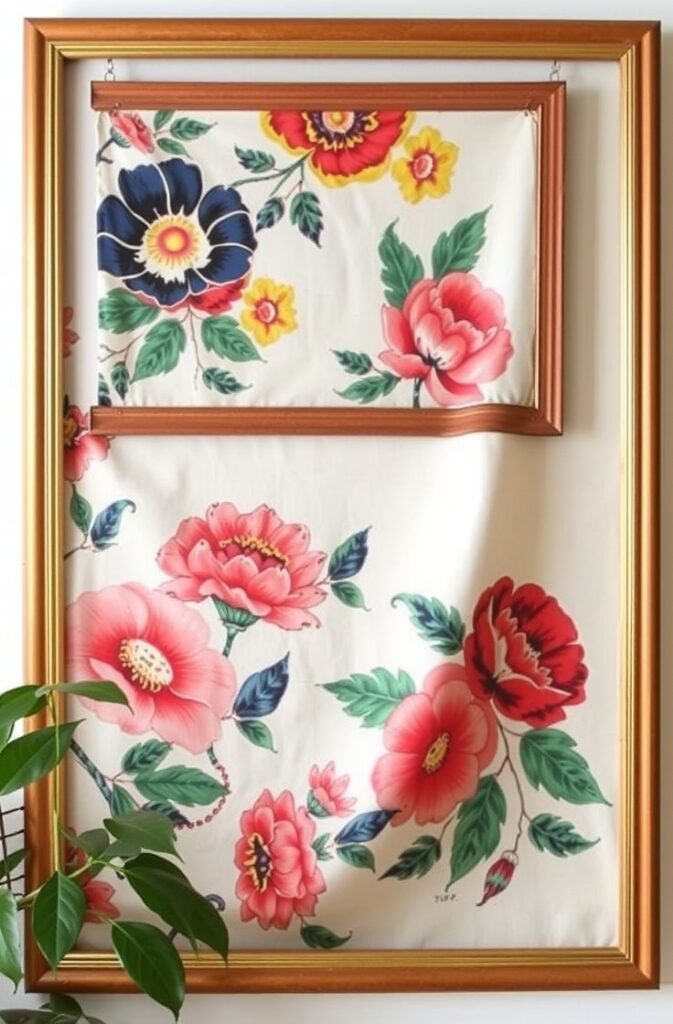
Sometimes art is hiding in your wardrobe. A vintage silk scarf with wild patterns from the 70s. A bold floral curtain from your mom’s attic. Frame it.
Hanging framed textiles is one of the most underused retro hacks. The colors are richer, the textures deeper, and they give that soft, nostalgic punch regular prints can’t. You can use clean modern frames for contrast or embrace thick wooden vintage frames to go full retro.
It’s cheap, it’s original, and no one else will have the exact same piece. That’s gold.
16. Add a Retro Drinks Station – Even If You Don’t Drink
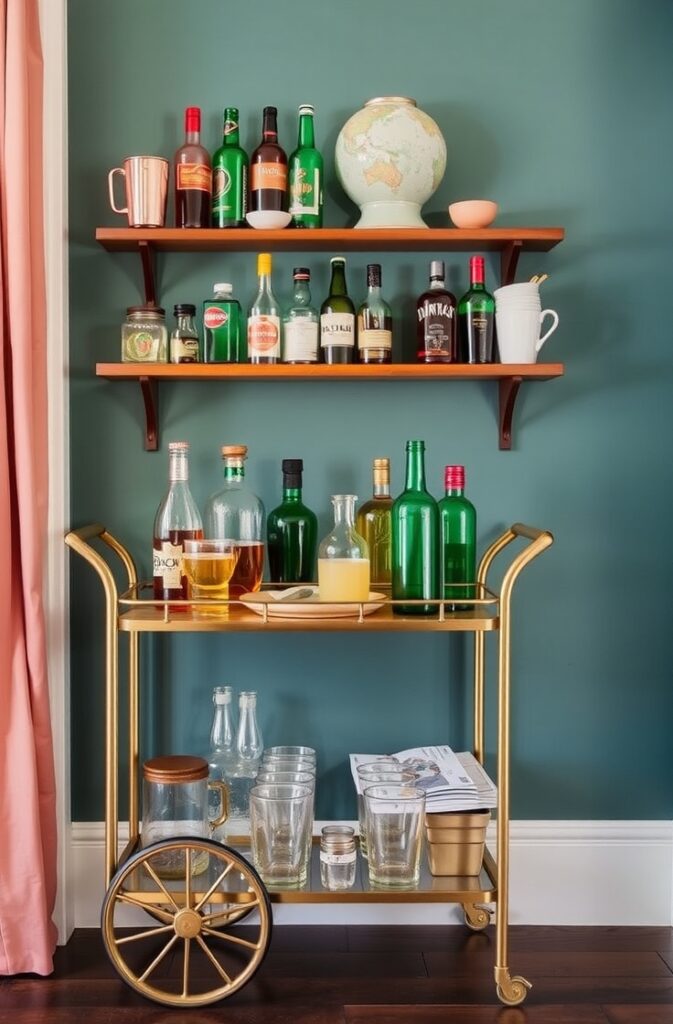
There’s something wickedly stylish about a vintage bar cart. Brass ones with wheels. Chunky wooden ones with folding sides. Even a tiny corner shelf can do the trick.
Load it up with colored glass bottles, retro cocktail shakers, mismatched tumblers, and maybe an old soda siphon if you can find one. It doesn’t even need alcohol fill it with sparkling water, vintage soda labels, or teas.
The point isn’t the booze. It’s the ritual. Retro living rooms always had a spot that said, “Let’s sit and chat for a while.”
17. Layer Lampshades for a Cinematic Glow
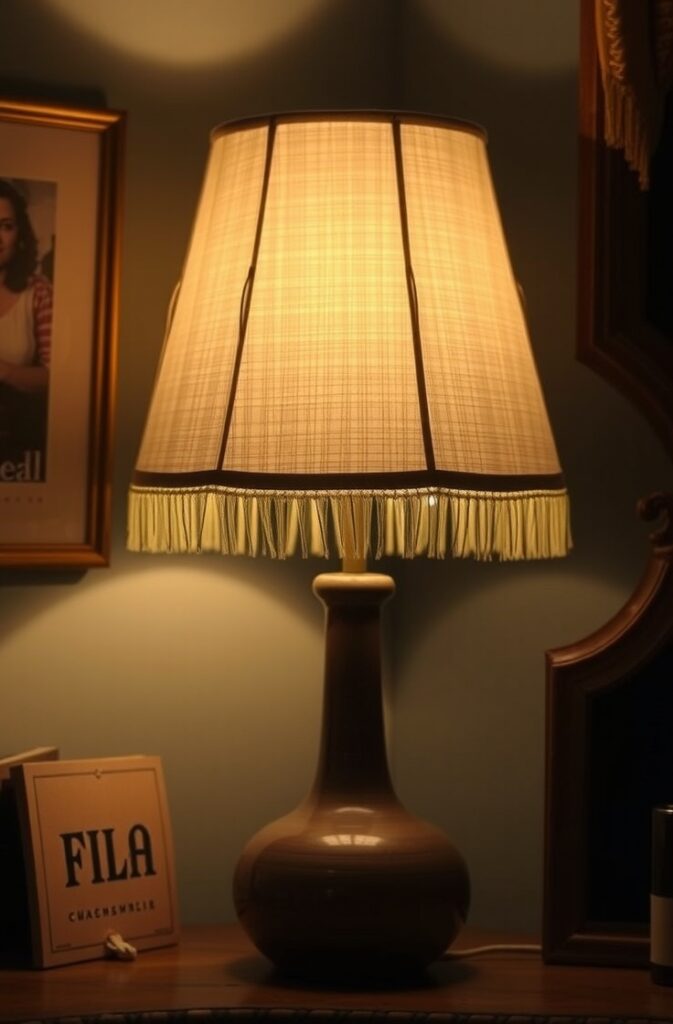
Modern lampshades are too minimal a single fabric, clean lines, boring. But vintage lighting often layered textures. Try putting a smaller inner shade inside a larger outer shade, or add a patterned fabric layer over a plain one.
When the lamp turns on, the light filters through in the strangest, most beautiful way. It’s like sepia for your room.
Experiment with lace, fringes, or pleated shades. The glow you get at night will make everything feel like an old film scene slightly dreamy, slightly golden, completely nostalgic.
18. Paint the Ceiling in a Vintage Shade
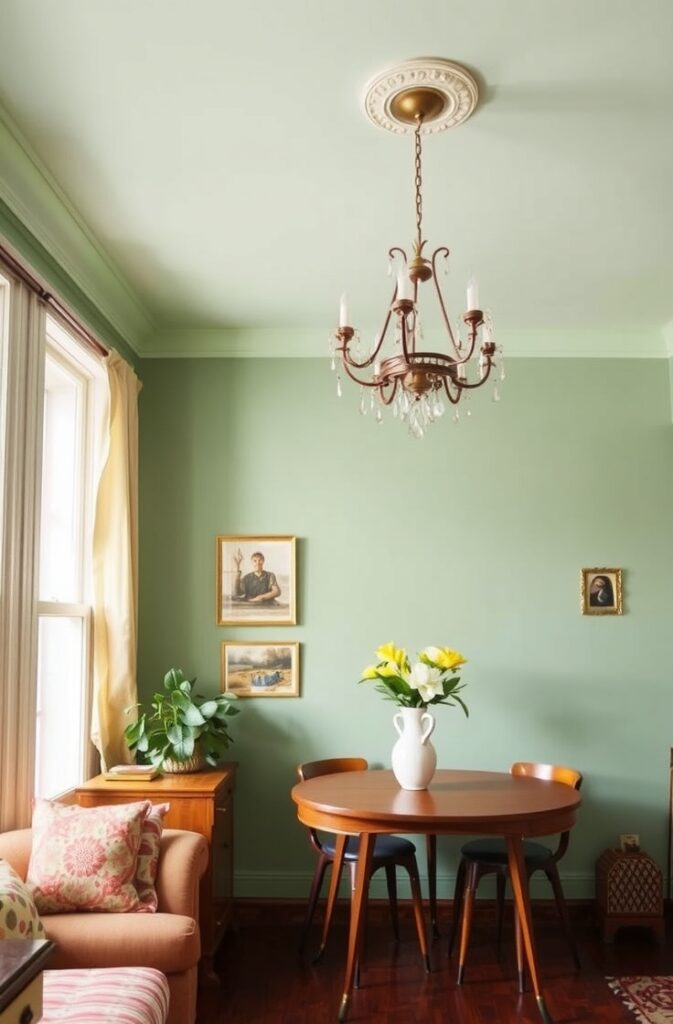
Everyone paints their walls. But the ceiling? That’s where vintage design used to play quietly. Try painting it a soft pistachio green, dusty rose, pale lemon, or a moody caramel.
This subtle shift completely changes the vibe. It wraps the room in color like a warm blanket. Pair it with simple walls to keep it balanced.
In the 50s and 60s, painted ceilings were surprisingly common, especially in European interiors. They add a little unexpected “hmm” moment when people look up.
19. Display Old Tech Proudly-Don’t Hide It
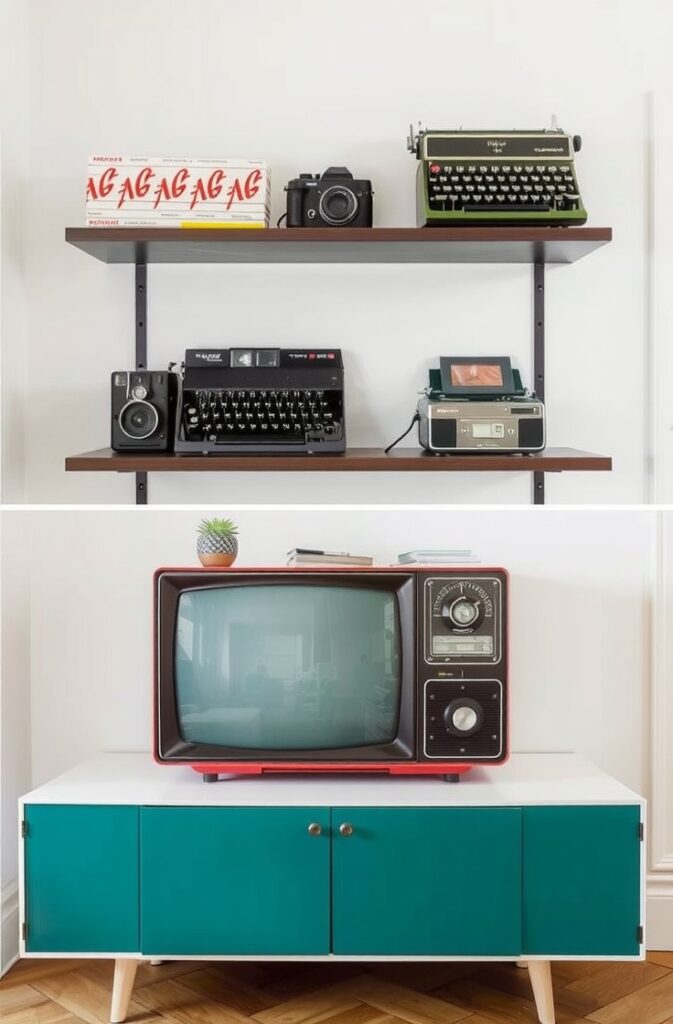
We’ve gotten into this weird habit of hiding anything that’s not sleek. But old televisions, cameras, radios, even typewriters… they’re basically sculptural objects now.
Place a retro TV (the boxy kind) on a low credenza and put a plant or vase on top. Set up an old camera collection on a floating shelf. Use a typewriter as a quirky side table topper.
Instead of tucking tech away, turn it into decor. It’s like giving old inventions their second act.
20. Create a “Retro Glow” Corner With Colored Bulbs
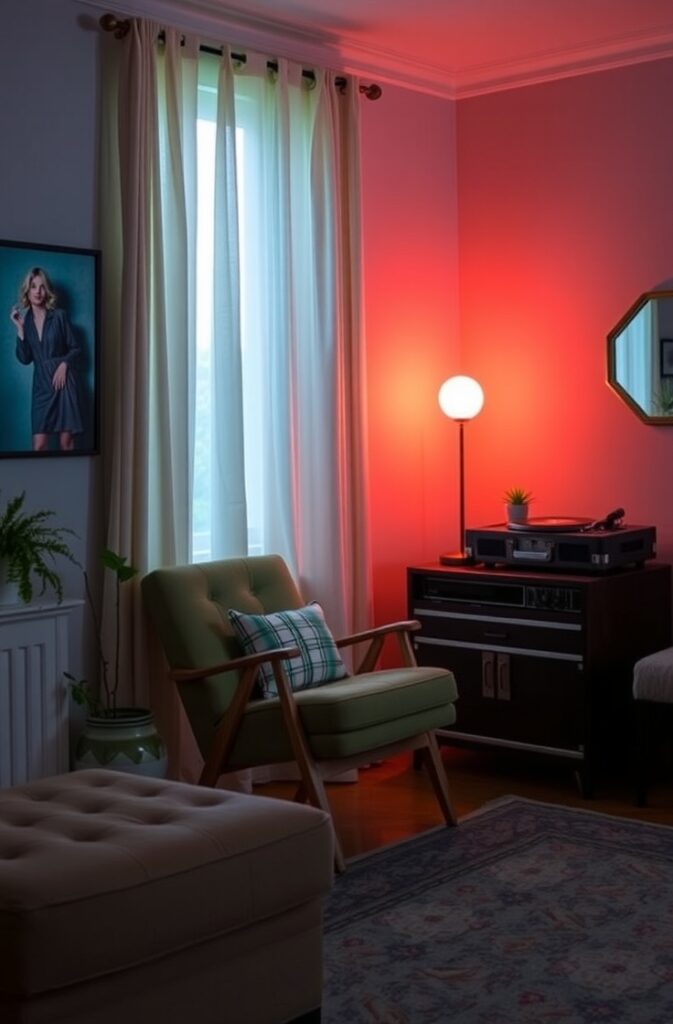
This one’s wild, but incredibly effective. Pick a corner of your living room and add colored light bulbs amber, soft orange, or even muted red. Place them behind furniture, inside a frosted lamp, or behind a curtain.
The glow should be subtle, like light leaking from a bar in 1974. It creates mood. It sets tone. It’s not neon-party lighting; it’s warm memory lighting.
Pair it with a vintage chair or old record player and suddenly the corner feels cinematic, almost like it’s humming its own soundtrack.
Bringing It All Together
What makes vintage-inspired spaces magical isn’t the furniture or the wallpaper alone. It’s how these elements talk to each other. A mix of textures, imperfect edges, confident colors, and objects that feel like they have history that’s the formula.
And the best part? You don’t need to be a collector or spend a fortune. A few carefully chosen pieces, some playful layering, and a willingness to break a few design rules is all it takes.
Your living room doesn’t have to look like a museum. It should feel like a place where a record might skip, a lamp hums softly, and stories float in the air like dust caught in the light. Vintage design, especially in 2025, isn’t about looking back it’s about bringing the warmth of the past into the present in ways that surprise and delight.

